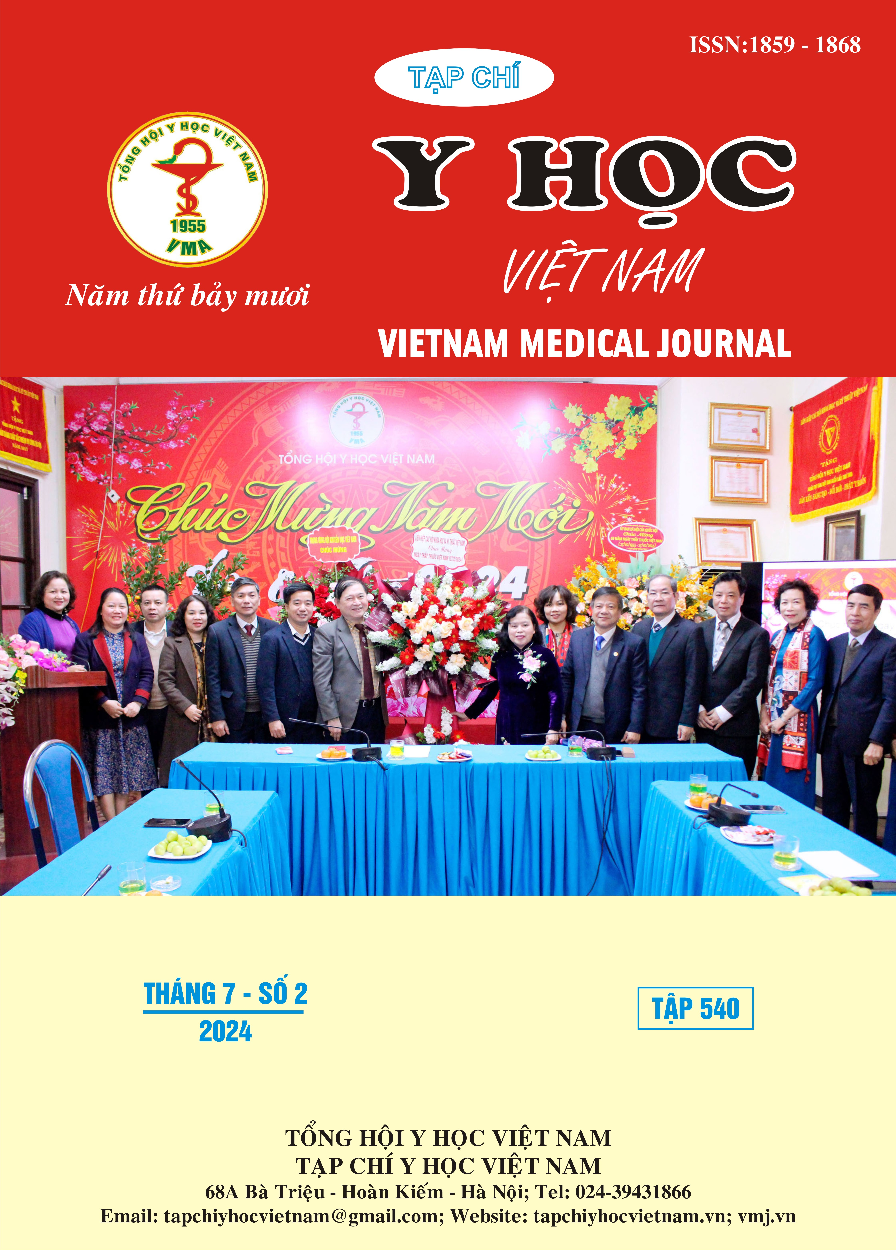EPIDEMIOLOGICAL, CLINICAL CHARACTERISTICS, CAUSE AND RESULTS OF TREATMENT OF FEBRILE SEIZURES IN CHILDREN AT CAN THO CHILDREN’S HOSPITAL
Main Article Content
Abstract
Aim: To describe epidemiology, clinical characteristic and cause of febrile seizures in children from 6 months to 5 years old. Subjects and Methods: 222 patients with febrile seizures in department of pediatric from January 2023 to December 2023. A descriptive study, retrospective. Results: The average age of febrile seizures is 27 ± 13,69 months; male children experience the condition at a rate 1,6 times higher than female children; most cases of febrile seizures occur in rural children (62,6%); most cases occur in children between the ages of 39 and < 40°C (58,6%); approximately 66,2% of children experience seizures when their fever lasts for less than six hours; the first 24 hours have an average of 1,37 ± 0,743 hours of seizures; of these, 76,1% only have one seizure; 80,6% of children with generalized convulsions during seizures and 78,8% of children with simple seizures were hospitalized with normal consciousness; 82,4% of children with seizures resulting in post-convulsion fever are aware and normal; With 57,2% of hospital admissions, upper respiratory tract infections are the primary cause of illness. Conclusion: There is a significant risk of convulsions in children with high fevers between the ages of 6 months and 5 years, especially in those under 3 years old. Upper respiratory tract infections are primarily responsible for febrile seizures.
Article Details
Keywords
Fever, seizures, children.
References
2. Lâm Thị Mỹ (2020), “Thiếu máu thiếu sắt, Phác đồ điều trị Nhi khoa, Bệnh viện Nhi Đồng 1, Tập 2”, Nhà xuất bản Y học, tr. 842-846.
3. Nguyễn Mai Phương, Nguyễn Thị Nhật Hòa, Phạm Văn Thức, Đinh Dương Tùng Anh (2023), “Đặc điểm dịch tễ lâm sàng và kết quả điều trị co giật do sốt đơn thuần” VietNam Medical 2, tr. 30 - 33.
4. Nguyễn Văn Bắc và các cộng sự. (2022), “Đặc điểm và một số yếu tố nguy cơ co giật do sốt ở trẻ em tại Bệnh viện Trung ương Thái Nguyên”, Tạp chí Y học Việt Nam, tr. 137 - 141.
5. Nguyễn Đình Thoại (2000), Đặc điểm lâm sàng và các yếu tố nguy cơ của co giật do sốt ở trẻ em tại Viện nhi khoa, Luận án thạc sỹ y học, Trường Đại học Y Hà Nội, Hà Nội. .
6. Lê Thiện Thuyết (2003), "Đặc điểm dịch tễ lâm sàng và nguyên nhân co giật do sốt cao ở trẻ em", Y học thực hành số 447, tr. 47-59.
7. Maiko Suto Risa Hashimoto (2021), “Use of antipyretics for preventing febrile seizure recurrence in children: a systematic review and meta-analysis”, European Journal of Pediatrics. 180, tr. 987 - 997.
8. Heloise H. S Juliane S. D, Mariano M.E, Regina P. A (2015), “Febrile seizures: a population - based study Convulsion febril: estudo de base populacional”, Jornal de Pediatria. 91 (6), tr. 529-534.


